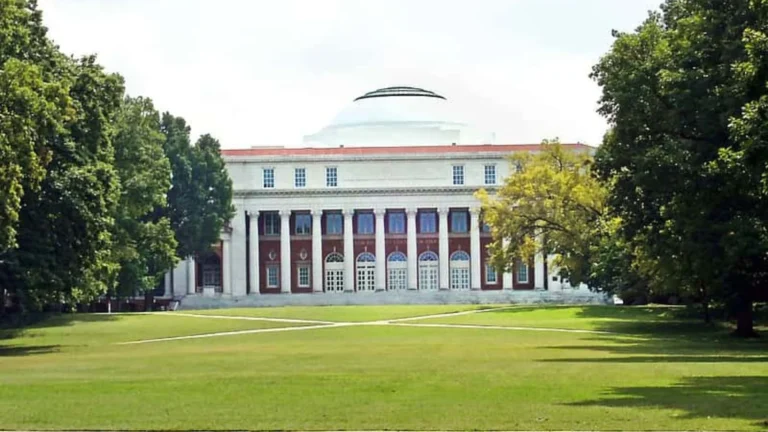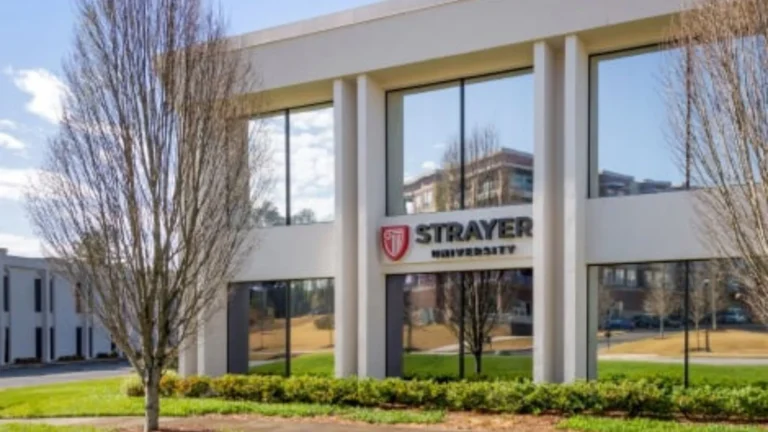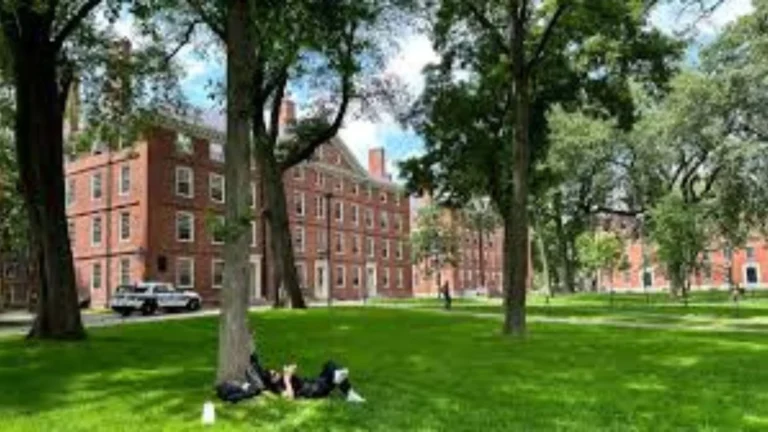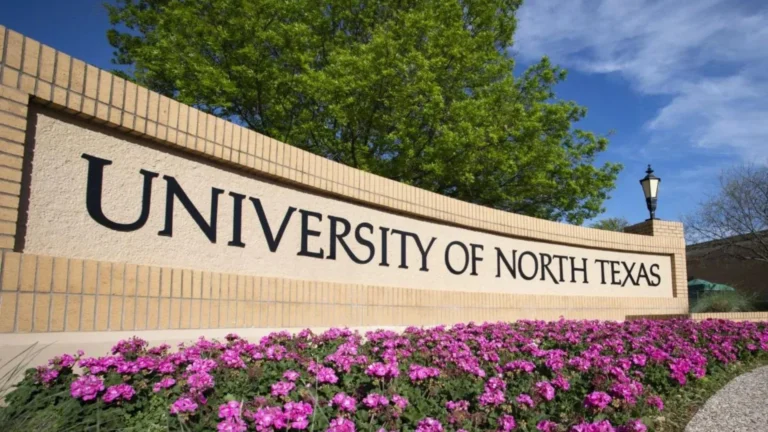A Beacon of Innovation and Transformation
Arizona State University (ASU) has emerged as a trailblazer in the realm of higher education, transforming itself into a renowned public research institution that is shaping the future of learning and discovery. A Beacon of Innovation and Transformation
Founded in 1885 as the Territorial Normal School, ASU has undergone a remarkable evolution, cementing its reputation as a dynamic and influential force in the academic landscape.
The university’s journey can be traced back to its humble beginnings as a small teacher’s college, catering to the educational needs of the local community.
Over the years, ASU has steadily expanded its academic offerings, research capabilities, and global reach, becoming a beacon of innovation and transformation.A Beacon of Innovation and Transformation
Embracing a New Vision: The ASU Advantage
In the early 2000s, under the visionary leadership of President Michael Crow, ASU embarked on a transformative journey to redefine the role of a public university.
Crow’s bold vision, known as the “New American University,” aimed to create an institution that would be accessible, inclusive, and committed to addressing the pressing challenges of the 21st century.
The New American University model at ASU has been a resounding success, attracting students from diverse backgrounds and fostering a culture of collaboration, creativity, and entrepreneurship.
The university’s commitment to accessibility has led to the implementation of innovative programs, such as the ASU Online initiative, which has expanded educational opportunities for students worldwide.
Academics and Research: Shaping the Future
ASU’s academic offerings are as diverse as they are renowned. The university boasts 24 colleges and schools, covering a wide range of disciplines, from engineering and the arts to business and the natural sciences.
Students at ASU have the opportunity to engage in cutting-edge research, collaborate with renowned faculty, and explore interdisciplinary programs that bridge the gap between traditional academic boundaries.
The university’s research enterprise is a driving force behind its transformative impact. ASU has consistently ranked among the top research universities in the United States, with over $700 million in annual research expenditures.
From groundbreaking advancements in renewable energy and sustainability to pioneering work in fields like artificial intelligence and neuroscience, ASU’s researchers are at the forefront of innovation.
Fostering a Culture of Innovation and Entrepreneurship
Arizona State University has firmly established itself as a hub of innovation and entrepreneurship, inspiring students and faculty to translate their ideas into tangible solutions.
The university’s commitment to entrepreneurship is exemplified by initiatives like the Entrepreneurship and Innovation Group, which provides resources,
mentorship, and funding opportunities for aspiring entrepreneurs.
ASU’s emphasis on innovation has also led to the creation of cutting-edge research centers and institutes,
such as the Biodesign Institute and the School of Sustainability. These interdisciplinary hubs bring together experts from various fields to tackle complex global challenges, driving progress and generating real-world impact.
Embracing Diversity and Inclusion
Diversity and inclusion are core values at Arizona State University, woven into the fabric of the institution. The university actively promotes an inclusive campus environment,
fostering a sense of belonging and empowering students from all backgrounds to thrive.
ASU’s commitment to diversity is reflected in its student population,
which represents a rich tapestry of cultures, ethnicities, and socioeconomic backgrounds.
The university’s efforts to create a welcoming and supportive environment have led to the establishment of numerous student organizations,
cultural centers, and diversity-focused initiatives that enrich the campus experience.
A Global Reach and Impact
Arizona State University’s influence extends far beyond the borders of Arizona, as it has established a strong global presence and reputation.
The university’s international initiatives, such as the ASU Global Engagement Office and the Thunderbird School of Global Management, have fostered collaborative partnerships and academic exchange programs around the world.
ASU’s global reach is further exemplified by its extensive network of international campuses and research centers. From its presence in locations like Los Angeles, Washington D.C., and Mexico City to its international research collaborations,
the university is actively shaping the global landscape of higher education and research.
Conclusion: A Transformative Legacy
Arizona State University’s remarkable journey from a small teacher’s college to a prominent public research institution is a testament to its unwavering commitment to innovation, inclusivity, and excellence.
Through its visionary leadership, academic prowess, and dedication to addressing the world’s most pressing challenges, ASU has emerged as a true beacon of transformation in the field of higher education.
As ASU continues to evolve and embrace new frontiers, it remains steadfast in its mission to empower students, drive cutting-edge research, and positively impact local and global communities.
The university’s legacy is one of ongoing reinvention, where the boundless potential of knowledge and innovation converge to shape a brighter future for all.
The Humble Beginnings of a Trailblazer
In 1885, the Arizona Territory legislature established the Territorial Normal School in Tempe, a small town just outside of Phoenix. This humble institution, dedicated to the training of teachers, would eventually transform into the dynamic and influential Arizona State University (ASU) that we know today.
The Territorial Normal School started with just 33 students and three faculty members,
occupying a single building on a 20-acre campus.
Over the next few decades, the school would undergo a series of name changes – from Tempe Normal School to Arizona State Teachers College – as it gradually expanded its academic offerings and evolved to meet the needs of the growing state.
It was not until 1958 that the institution formally adopted the name Arizona State University,
a reflection of its growing stature and ambition to become a comprehensive research and teaching institution.
This pivotal moment marked the beginning of a remarkable transformation
that would propel ASU into the national spotlight as a trailblazer in the world of public higher education.

The Vision of the New American University
In the early 2000s, ASU found itself at a crossroads. The university was faced with the challenge of redefining its role and purpose in a rapidly changing landscape of higher education. Enter Michael Crow, a visionary leader who would forever alter the trajectory of the institution.
Crow, who assumed the presidency of ASU in 2002, introduced a bold and innovative concept known as the “New American University.”
This transformative model sought to reshape the traditional public research university, making it more accessible, inclusive, and responsive to the evolving needs of the 21st century.
At the heart of the New American University model was a fundamental shift in priorities. Rather than focusing solely on exclusivity and prestige,
Crow and his team envisioned an institution that would embrace the principles of accessibility, inclusivity, and social embeddedness.
The goal was to create a university that would not only educate the brightest minds but also actively engage with and address the pressing challenges facing local and global communities.
“We wanted to create an institution that would be a force for positive change in the world,” Crow explained. “A university that would break down barriers, foster collaboration, and empower people from all backgrounds to become agents of transformation.”A Beacon of Innovation and Transformation
Driving Innovation and Entrepreneurship
One of the key pillars of the New American University model is the university’s deep commitment to innovation and entrepreneurship. ASU has established itself as a hub of creativity, where students, faculty, and researchers are empowered to translate their ideas into tangible solutions.
The Entrepreneurship and Innovation Group (EIG) at ASU is a prime example of this ethos in action. The EIG provides a comprehensive ecosystem of resources, mentorship,
and funding opportunities to support aspiring entrepreneurs, regardless of their academic background or field of study.
“We want to cultivate a culture of innovation and risk-taking,”
said Sidnee Peck, director of the Center for Entrepreneurship at ASU’s W.P. Carey School of Business. “Our goal is to equip our students with the tools, mindset,
and networks they need to turn their passions and ideas into real-world impact.”
This commitment to entrepreneurship is reflected in the university’s numerous research centers and institutes,
which bring together experts from diverse disciplines to tackle complex global challenges.
The Biodesign Institute, for instance, is a hub of interdisciplinary research focused on addressing critical issues in areas such as health, sustainability, and security.
“At ASU, we believe that the most transformative solutions often arise at the intersection of different fields,”
explained Sethuraman Panchanathan, executive vice president of the Biodesign Institute. “By fostering a culture of collaboration and cross-pollination, we’re able to drive innovation and create tangible impact.”
Embracing Diversity and Inclusion
Diversity and inclusion are core values that are deeply woven into the fabric of Arizona State University. The university has made a concerted effort to create an inclusive campus environment that celebrates the rich diversity of its student body and empowers individuals from all backgrounds to thrive.
“Diversity is not just a buzzword at ASU;
it’s a fundamental part of who we are,” said Georgina Bustamante, the university’s chief diversity officer.
“We believe that the diversity of our community is a source of strength and a key driver of innovation and collaboration.”A Beacon of Innovation and Transformation
This commitment to diversity is reflected in the university’s student population,
which represents a tapestry of cultures, ethnicities, and socioeconomic backgrounds. ASU has made significant strides in expanding access to higher education, particularly for underrepresented and first-generation students.
The university’s efforts to foster a welcoming and supportive environment are manifested through a wide range of student organizations, cultural centers, and diversity-focused initiatives. These include the African Student Association,
the Latinx/Chicanx Student Coalition, the Asian Pacific American Student Coalition, and the LGBTQ+ Sun Devils, among others.
“At ASU, we believe that diversity is not just about numbers; it’s about creating a true sense of belonging and empowering people to share their unique perspectives,” said Bustamante.
“By celebrating our differences and finding common ground,
we’re able to build a community that is stronger, more resilient, and more innovative.”
Redefining the Role of the Public Research University
Under Michael Crow’s leadership, Arizona State University has emerged as a trailblazer in the world of public higher education,
redefining the role and purpose of the traditional research university.
The New American University model has been a resounding success,
attracting students from diverse backgrounds and fostering a culture of collaboration, creativity, and entrepreneurship. The university’s commitment to accessibility has led to the implementation of innovative programs, such as the ASU Online initiative,
which has expanded educational opportunities for students worldwide.
“We wanted to create a university that was truly accessible and responsive to the needs of the 21st century,” Crow explained. A Beacon of Innovation and Transformation
“By breaking down barriers and fostering a culture of innovation,
we’re able to empower students from all walks of life to become agents of positive change.”
This commitment to accessibility and inclusivity has been a driving force behind ASU’s remarkable growth and transformation. The university has steadily expanded its academic offerings, research capabilities, and global reach,
cementing its reputation as a dynamic and influential force in the academic landscape.
Shaping the Future Through Cutting-Edge Research
At the heart of Arizona State University’s transformative impact is its robust research enterprise. The university has consistently ranked among the top research institutions
in the United States, with over $700 million in annual research expenditures.
ASU’s researchers are at the forefront of innovation, tackling some of the most pressing challenges facing the world today. From groundbreaking advancements in renewable energy and sustainability to pioneering work in fields like artificial intelligence and neuroscience,
the university’s interdisciplinary research centers and institutes are driving progress and generating real-world impact.
One such example is the Biodesign Institute, a hub of interdisciplinary research focused on addressing critical issues in areas such as health, sustainability, and security.
The institute’s researchers are at the forefront of cutting-edge research,
developing innovative solutions that have the potential to transform entire industries.
“At ASU, we believe that the most transformative solutions often arise at the intersection of different fields,”
explained Sethuraman Panchanathan, executive vice president of the Biodesign Institute. “By fostering a culture of collaboration and cross-pollination, we’re able to drive innovation and create tangible impact.”
The university’s commitment to research excellence is not limited to the natural sciences and engineering. ASU’s faculty and students are also making significant contributions in the humanities, social sciences, and the arts,
exploring the complex interplay between technology, culture, and society.A Beacon of Innovation and Transformation
A Global Reach and Impact
Arizona State University’s influence extends far beyond the borders of Arizona, as the institution has established a strong global presence and reputation.
The university’s international initiatives, such as the ASU Global Engagement Office and the Thunderbird School of Global Management,
have fostered collaborative partnerships and academic exchange programs around the world.
ASU’s global reach is further exemplified by its extensive network of international campuses and research centers. From its presence in locations like Los Angeles, Washington D.C., and Mexico City to its international research collaborations,
the university is actively shaping the global landscape of higher education and research.
“We believe that the challenges we face today are inherently global in nature,” said Crow. “By establishing a robust global footprint,
we’re able to leverage our expertise and resources to address these challenges on a worldwide scale,
and to learn from our international partners and collaborators.”
This global perspective is reflected in the university’s academic programs, which offer students the opportunity to study abroad,
engage in cross-cultural exchange, and develop a deeper understanding of the interconnected world they will inherit.A Beacon of Innovation and Transformation
Conclusion: A Transformative Legacy
Arizona State University’s remarkable journey from a small teacher’s college to a prominent public research institution
is a testament to its unwavering commitment to innovation, inclusivity, and excellence. Through its visionary leadership, academic prowess, and dedication to addressing the world’s.A Beacon of Innovation and Transformation








I don’t think the title of your article matches the content lol. Just kidding, mainly because I had some doubts after reading the article.